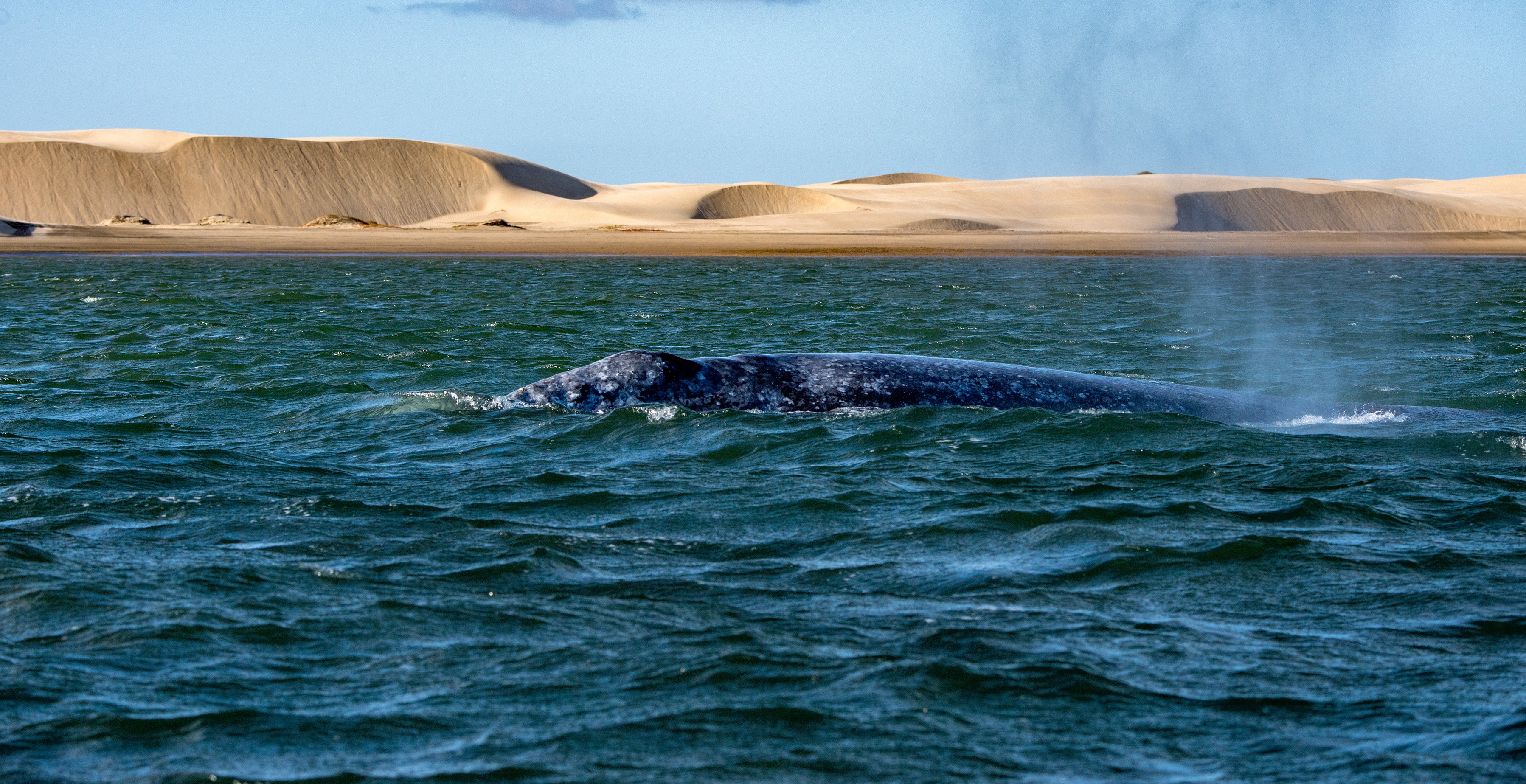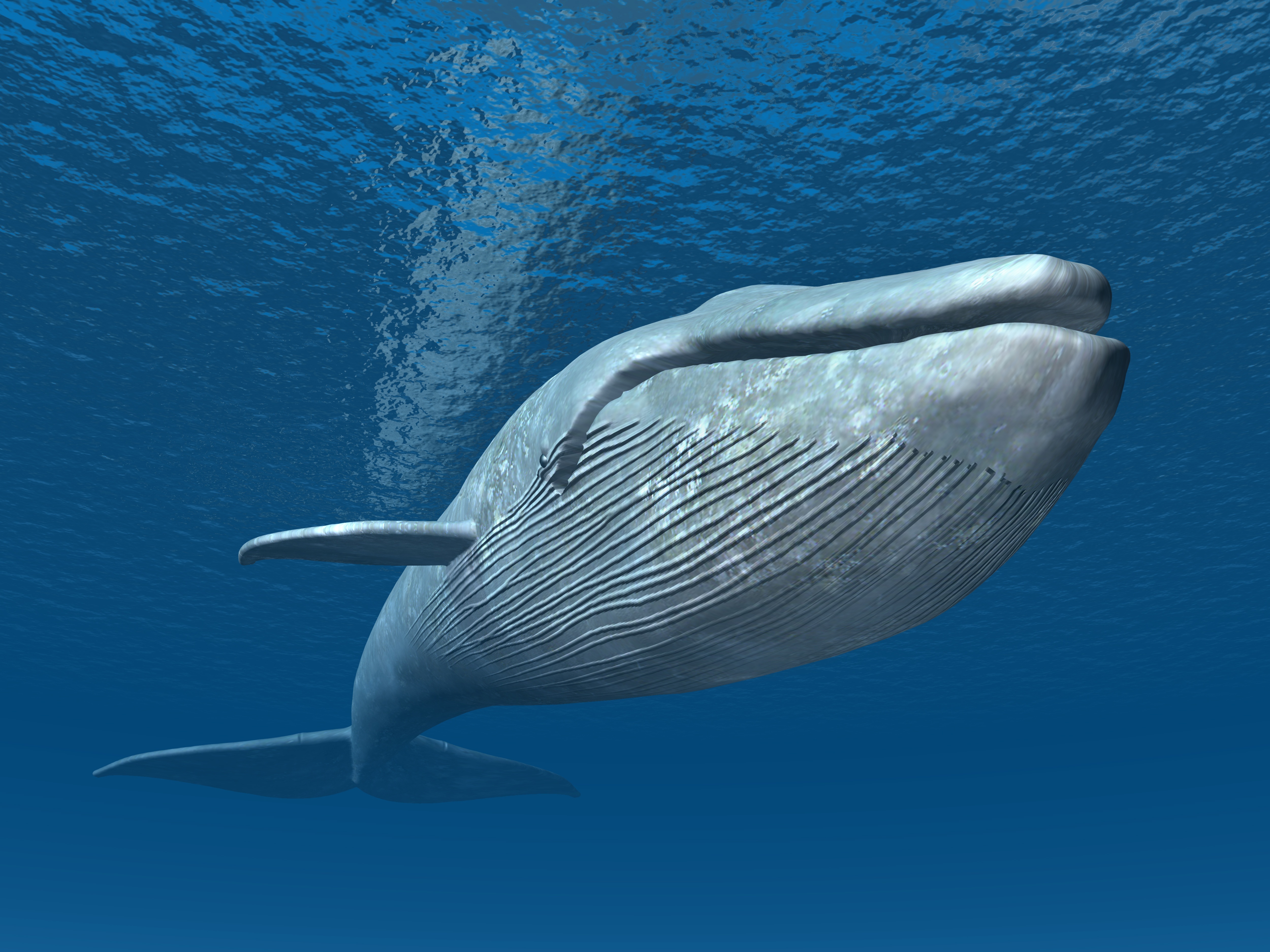Blue Whale Vs. Gray Whale- What’s the Difference?

Whales are extremely impressive marine mammals with many characteristics that make them unique amongst others. For more reasons than one, whales leave us in awe, being a part of one the oldest and largest species on this planet. Due to this, whale watching is such an exciting activity to partake in! Within the whale species are the Gray Whale and the Blue Whale, both extraordinary creatures living completely different lives. Read on to learn about the most significant differences between these two whales.
How Big Are Gray Whales?
Gray whales are large mammals, although they are smaller than some of the other whale species. Even at birth, they are big. At birth, the average newborn gray whale calf is around 14 to 16 feet long and around 2,000 pounds. Although the average weight of an adult is around 60 to 70,000 pounds, they can grow to as big as 90,000 pounds and 49 feet long.
Unlike humans, who eat day after day on a regular basis, gray whales take in most of their food during the summer months. When they migrate down south to mate and give birth, they eat very little. While in the arctic waters, they eat much of the time off the floor of the ocean. There, they roll to the side and suck up sediment that contains small fish, larvae, tube worms, and plankton. The sediment and water are filtered out, and the food stays.
During the summer months, gray whales typically eat around 4% of their body weight, which averages about 2,400 pounds of food daily. This is enough to gain 16 to 30% of their body weight, and the associated fat stores helps them survive the rest of the year with little to no eating.
In contrast, a newborn blue whale calf weighs around 8,800 pounds and is about 25 feet in length. It gains about 200 pounds a day during the first year. Blue whales also eat more during four to five months of the year, and during this time, they can take in an average of 9,000 pounds of food a day. This helps explain how blue whales get to be so big.
Can You See Blue Whales Whale Watching?
The goal with whale watching is to see as much sea life as possible. Seeing blue whales is more common in winter months, as this is when they typically migrate down south. They are also seen more often further from shore, as they like deeper waters. However, because there are not that many blue whales remaining, you may not spot one when you go whale watching. However, there is a pretty good chance you will see other whale species as well as dolphins and a variety of birds.
Can You See Gray Whales Whale Watching?
As with blue whales, you have a better chance of seeing gray whales in the winter months when they are in warmer waters to give birth. They are more likely to be seen closer to the coast, as that is where they prefer to hang out. Gray whales are more populous than gray ones, so there is a higher chance of seeing them while out on the boat.

How Does Reproduction Differ Between the Two Whale Types?
Because whales are mammals, their reproduction is similar to humans. During gestation, the growing calf receives nutrients through an umbilical cord. The mother delivers a live calf (as opposed to laying eggs), and they give birth to one calf at a time.
Gray whales become sexually mature at around 8 to 9 years of age. The gestation period for females is 12 to 13 months.
Blue whales become sexually mature anytime between 5 and 15 years of age. The gestation period for blue whales is 11 to 12 months.
What are the Lifespans of Gray and Blue Whales?
Whales, especially smaller ones, are the object of various predators, such as sharks and killer whales. Their lifespans are estimated by counting the waxy ear plugs found in deceased whales. The average lifespan of gray whales is between 50 and 70 years, and the average lifespan of blue whales is 80 to 90 years.
Feeding Habits
The Gray Whale is opportunistic when it feeds, eating from a large of range of foods and areas. However, they prefer to feed on amphipods and mysids, which resemble tiny shrimp.
The Blue Whale prefers to eat krill and copepods for its meals. It is estimated that it takes around 8,000 pounds of food to fill its stomach each day.
Migration Patterns
The Gray Whale travels up to 12,000 miles round trip each year, spending their winter in the warm waters of Southern California and Mexico while moving on to the chilling Arctic seas in the summer.
The Blue Whale has a harder migration pattern to track, despite being one of the largest living mammals. Research has shown that in the winter, they travel to warm, low latitude tropical waters to breed. In the summer, they move on to high latitude polar waters with a colder temperature where there is plenty of krill to eat.
Population
The Gray Whales are very populous, with over 26,000 in existence. Within that large number you will find that 99% of them are eastern North Pacific Gray Whales and 1% being the Western Gray Whale.
Blue Whales, on the other hand, are an extremely endangered species with only 2,800 believed to be left. Sadly, this is why they are one of the rarest whales you can encounter.
Habitat
Gray Whales prefer to stay closer to the coast as they are shallow-water feeders. Most well known populations can be found in the eastern North Pacific.
Blue Whales are globally distributed and prefer to spend their time in deeper ocean waters.

Appearance
The Gray Whale is a deep gray color. Due to barnacles and whale lice, the Gray Whale is patched with lighter white and gray marks. Unlike the Blue Whale, the Gray Whale does not have a dorsal fin.
While under water, the Blue Whales seem to have a deep blue color to them. However, this changes when they are above sea level, as they appear to have more of a darker blue/grey appearance. Their underbellies are light due to the microorganisms that live upon them.

Size
The size of the two whales is what distinguishes them the most. The Gray Whale is the seventh largest whale in the species, being around 44-48 ft in length and weighing about 60,000 pounds.
The Blue Whale is the largest mammal in existence. As an adult, they weigh up to 300,000 pounds! They can be up to 100 ft long, with females generally be larger than the males.
